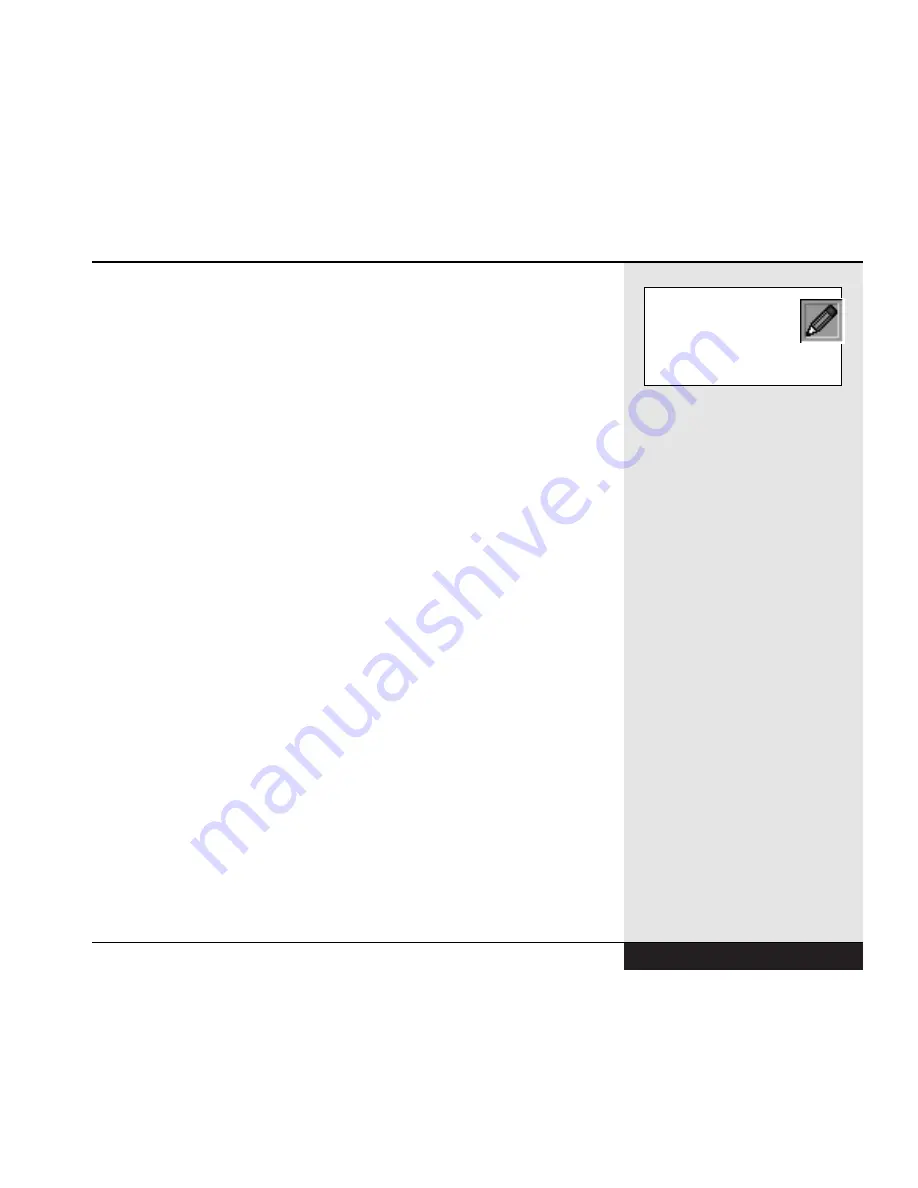
Mouse Buttons & Pointing Devices
Your WinBook XL2 comes with a built-in touchpad and pointing stick
and can support an external mouse via the USB, PS/2 or serial ports. You
can use two pointing devices simultaneously. See Chapter Four for more
information about pointing devices.
Pointing Stick
(on selected models)
The pointing stick device is the small red knob (it looks like a pencil
eraser) that sits just below the [G] and [H] keys of your keyboard. This
pressure-sensitive device translates the pressure of your fingertip on the
knob into movement of the cursor. Shift the pressure of your fingertip
slightly in the direction in which you want to move the cursor. The two
switches below the touchpad serve as the left and right mouse buttons and
can be used with either the pointing stick or the touchpad.
Touchpad
The touchpad is a rectangular electronic panel located just beneath your
keyboard. You can use the static-sensitive panel of the touchpad as a
pointing device. Place your finger gently on the surface of the touchpad
and slide it to move the cursor. You can use the buttons along the touch-
pad as left and right mouse buttons. You can also tap lightly on the touch-
pad, which the system will recognize as a left mouse click.
You can click and drag an item with the touchpad by pointing at the item,
tapping to select it and then, while holding your finger on the pad, sliding
your finger in the direction of the movement desired.
Use of an external pointing device with your WinBook XL2 is discussed
in Chapter Four.
No matter which pointing device you use, its speed, or the speed of an
external mouse, for your WinBook XL2 system can be adjusted to accom-
modate your personal preferences. You can alter the mouse speed for
applications running in Windows 98 by accessing the Mouse selection in
Chapter 1: Getting Started
1.19
When the rubber cover
of the pointing stick starts
to wear down, you can
purchase additional covers from
WinBook.
Summary of Contents for XL2
Page 1: ...User s Manual for notebook computers ...
Page 6: ...Table of Contents 6 Table of Contents ...
Page 11: ...Preface v ...
Page 13: ...Chapter One Getting Started Chapter 1 Getting Started 1 1 ...
Page 40: ...Chapter Two Basic Computing Chapter 2 Basic Computing 2 1 ...
Page 60: ...Chapter Three Mobile Computing Chapter 3 Mobile Computing 3 1 ...
Page 80: ...Chapter Four Desktop Operation Chapter 4 Desktop Operation 4 1 ...
Page 98: ...Chapter 4 Desktop Operation 4 19 ...
Page 99: ...Chapter Five PC Cards PCMCIA Chapter 5 PC Cards PCMCIA 5 1 ...
Page 113: ...Chapter Six Video Settings Chapter 6 Video Settings 6 1 ...
Page 123: ...Chapter Seven Upgrading Chapter 7 Upgrading 7 1 ...
Page 135: ...7 13 Chapter 7 Upgrading ...
Page 160: ...Chapter Nine Troubleshooting Chapter 9 Troubleshooting 9 1 ...
Page 187: ...Glossary Glossary G 1 ...
Page 204: ...Index Index I 1 ...
Page 211: ...WinBook Corporation 2701 Charter Street Hilliard Ohio 43228 ...
















































